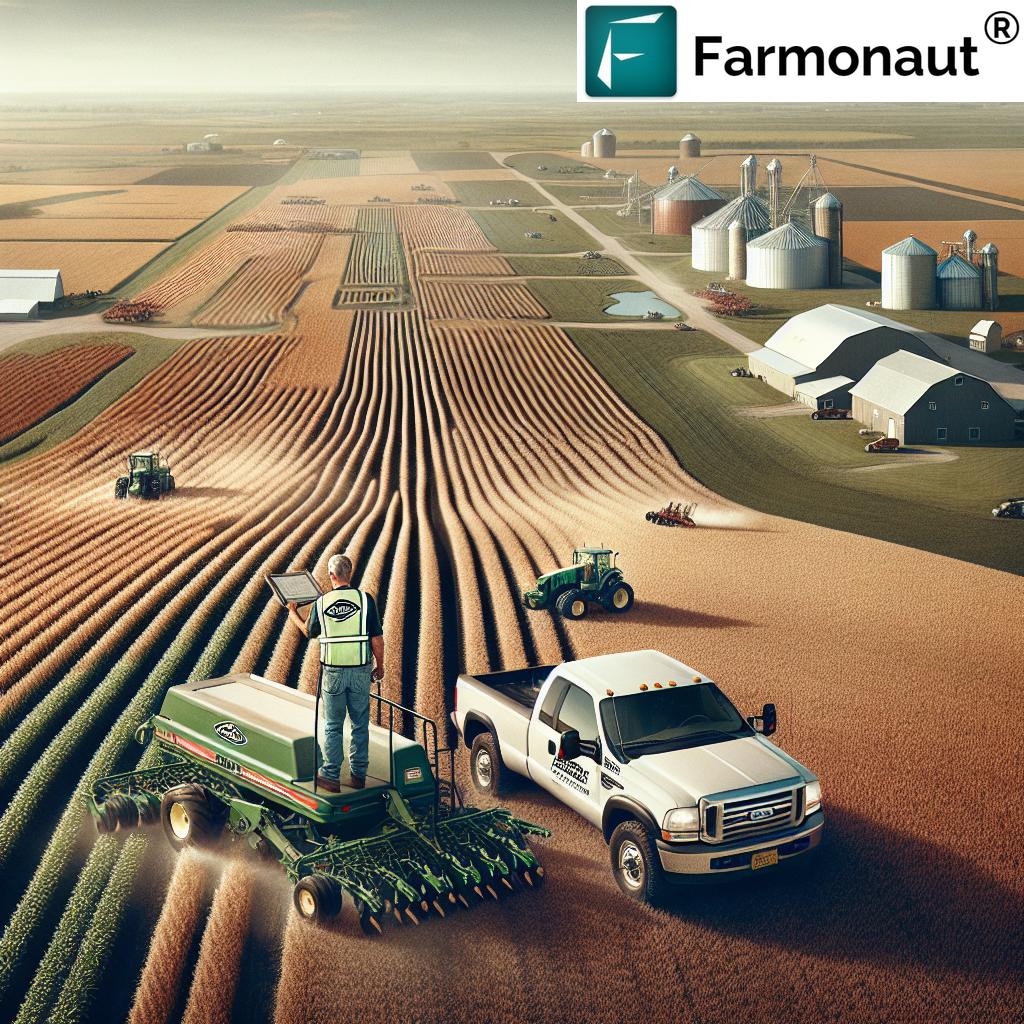Texas Agriculture Products: 2025 Trends & Innovations
“Texas farmers are projected to adopt precision agriculture on over 60% of cropland by 2025, boosting efficiency statewide.”
Texas stands as one of the foremost agricultural powerhouses in the United States, renowned for its vast, diverse, and continuously evolving agricultural sector. In 2025, Texas agricultural products remain critical to the state’s economy, shaping rural communities and driving innovation amid challenging climates, shifting market demands, and rapid technological advancements.
Diversity and Scale of Texas Agriculture Products in 2025
A defining feature of agriculture Texas is its exceptional diversity and scale. With expansive geography, varied climate zones ranging from the arid stretches of West Texas to the humid regions along the east, the state supports a remarkable array of agricultural products. In 2025, Texas continues to headline national and international conversations around food security, innovation, and sustainability.
- Texas boasts leading production in both crops and livestock, supporting the local economy and broader export markets.
- The state’s size and geographic diversity promote a wide array of agricultural practices—from irrigated row crop cultivation to extensive rangeland grazing.
Main Texas agricultural products in 2025 include:
- Cotton – The iconic “white gold”: Texas remains the leading cotton producer in the United States, with output and exports dominating national stats.
- Corn & Wheat – Vital row crops: Key for local consumption, animal feed, and export markets. Improved drought tolerance and smart water management drive growth.
- Sorghum: Drought tolerance and versatility enhance its importance in western and central Texas.
- Hay & Forages: Providing critical fodder for the state’s extensive livestock sector.
- Cattle & Beef: Texas leads the nation in cattle inventory, with innovative practices boosting productivity and sustainability.
- Dairy: Quickly evolving with technology, Texas dairy farmers are expanding production and efficiency.
- Poultry & Eggs: Robust sector supporting protein markets both locally and nationally.
The agricultural products of Texas reflect an impressive balance between tradition and innovation, sustaining rural communities while adapting to technological and environmental change.
“In 2025, Texas is expected to lead the U.S. in cotton production, contributing nearly 40% of the national output.”
Key Texas Agricultural Products: 2025 Estimated Output, Technology Adoption & Sustainability Impact
| Product | Estimated 2025 Output | Technology Integration Examples | Sustainability Impact |
|---|---|---|---|
| Cotton | ~7 million bales | Precision irrigation systems, satellite crop monitoring, pest control drones, drought-resistant seed varieties | High (soil health focus, water use efficiency, carbon footprint tracking) |
| Cattle (Beef) | ~13.5 million head | Smart grazing management, health tracking wearables, satellite pasture monitoring | Medium-High (sustainable grazing, blockchain traceability) |
| Corn | ~350 million bushels | AI-driven field analytics, moisture sensors, drone-based pest scouting | Medium (integrated pest management, reduced fertilizer usage) |
| Wheat | ~95 million bushels | Variable-rate seeding, IoT-enabled weather stations, satellite advisory platforms | Medium (soil health, efficiency gains) |
| Sorghum | ~70 million bushels | Satellite yield forecasting, multi-crop rotation management, reduced-till practices | High (water conservation, biodiversity) |
| Dairy (Milk) | ~15 billion lbs | Robotic milking machines, smart feed logistics, climate control sensors | Medium-High (waste management, energy efficiency) |
| Poultry/Eggs | Eggs: ~8 billion; Broilers: ~700 million | Automated health monitoring, precision feed management | Medium (resource use, biosecurity) |
| Hay & Forages | ~15 million tons (dry) | Forage quality mapping via drones, smart balers, satellite rainfall forecasting | Medium (efficient land use, drought resilience) |
Livestock & Dairy: Cornerstones of Texas Agriculture in 2025
The Texas livestock sector is not only central to its agricultural economy but remains an integral piece of the nation’s food security in 2025. Cattle are a major economic contributor, with Texas leading the nation in beef production. Modern management strategies, animal health technologies, and grazing innovations allow ranchers to maintain high output levels while addressing environmental and sustainability challenges.
- Innovative grazing rotation schedules and restoration of native grasslands improve soil health and carbon sequestration.
- Wearable tech and satellite tracking offer real-time monitoring of animal health, optimizing herd management and yield.
- Dairy operations are at the forefront of adopting robotics and climate monitoring, boosting efficiency and animal welfare.
Technology and Innovation: The Pillars of Sustainable Agriculture in Texas
In 2025, Texas farmers widely adopt precision agriculture and advanced technologies to optimize efficiency and resource use. The integration of satellite imaging, drones, AI-driven data analytics, and IoT soil sensors is shaping a new era for all agricultural products in Texas.
- Farmers use real-time satellite data to monitor crop health, soil moisture, and forecast yields; this supports responsive decision-making and early pest control.
- Drone surveillance assists with targeted spraying, reducing input costs and environmental impact.
- AI platforms interpret big data for market forecasting, supporting supply chain resilience and risk reduction.
- Smart irrigation systems improve water use efficiency, crucial during periods of drought.
The application of these emerging technologies ensures Texas agricultural products remain competitive, sustainable, and profitable, despite complex challenges posed by weather extremes, water scarcity, and shifting consumer demands.
Examples of Agricultural Technology Making a Difference in Texas (2025):
- Satellite Monitoring: Precise mapping and NDVI (Normalized Difference Vegetation Index) allow early detection of crop stress and pests.
- Blockchain Traceability: Enhances food safety by tracking product origin — now essential for export and consumer trust. Learn more about Farmonaut’s Blockchain Traceability for the agri sector.
- AI-Driven Advisory Systems: Real-time, weather-informed guidance for field operations enhances productivity.
- Smart Fleet Management: For larger farms, vehicle and equipment tracking improve logistical efficiency. Explore Farmonaut Fleet Management to optimize operations and minimize costs.
Satellite & Precision Farming: 2025 and Beyond
By 2025, satellite technology and precision farming practices have gone mainstream in Texas agriculture, marking a pivotal shift toward data-driven, resource-efficient, and climate-resilient systems.
Satellite technologies provide high-frequency, large-scale, and cost-effective monitoring of fields — offering unprecedented insights into vegetation health, soil moisture, and resource management. Farmonaut’s large-scale farm management solutions allow farm owners to monitor, plan, and optimize every field operation, all from a single dashboard or mobile device.
- AI-guided crop health analytics support timely interventions.
- Blockchain integration secures export market access, creating transparent supply chains.
- Drone-based field surveillance and yield estimation reduce labor input and unlock predictive planning.
Case in Point: Cotton – “White Gold” and the Rise of Smart Farms
Texas remains the dominant cotton producer in 2025, thanks to advanced precision irrigation, satellite-based pest monitoring, and AI-guided seed selection. These tools help boost yields, minimize resource waste, and protect against increasingly unpredictable weather events.
- Smart irrigation paired with remote sensing ensures each cotton field gets exactly the right amount of water.
- Real-time pest alerts reduce pesticide use, easing environmental impacts.
- AI platforms predict price trends, helping growers time the market for better profitability.
Data-Driven Management: Farmonaut Technology in Action
We at Farmonaut are committed to empowering Texas producers, businesses, and government agencies with cost-effective, satellite-enabled solutions for every stage of the agricultural value chain. Our platforms provide:
- Satellite crop monitoring with NDVI analytics for near real-time vegetation health assessment
- Comprehensive traceability solutions via blockchain for safe, export-ready products
- Fleet and resource management for efficient logistics and equipment tracking
- Environmental impact monitoring — including carbon footprinting and sustainability scores — to meet regulatory and consumer expectations
Economic & Environmental Impact of Texas Agriculture in 2025
Texas agriculture continues to drive the state’s economy, creating millions of jobs and supporting rural communities. With production spanning raw foodstuffs to processed goods and bioproducts, the sector plays a foundational role in local development and global trade.
- Agriculture is not only an economic pillar but a source of community stability in rural Texas.
- The dynamic export profile of Texas agricultural products supports international markets and brings new revenues into the state.
- Agri-sector innovation fosters job creation in areas such as agritech, supply chain analytics, and sustainability consulting.
Environmental challenges—especially climate volatility, water scarcity, and shifting pest patterns—require proactive solutions:
- Government and extension services offer incentives for water-efficient irrigation and resource conservation programs.
- Farmers increase organic matter and reduce tillage to improve soil health and carbon sequestration.
- Adoption of carbon footprint tracking and supply chain traceability is on the rise among Texas agri-businesses.
Future Trends & Markets: Texas Agriculture Products Beyond 2025
The next decade brings both opportunity and disruption for Texas’s agri-sector. Modern farm management tools, access to new markets, and robust sustainability frameworks promise to protect Texas agricultural products’ leadership position.
- Automated farm equipment and satellite-enabled crop monitoring will reduce labor needs and ensure data-informed decision making.
- Smart irrigation systems driven by real-time soil and weather data will counteract drought trends.
- Climate-adaptive seed varieties and regenerative practices will ensure long-term resilience.
- Traceability/Blockchain: Transparency is a must for both local and export markets.
- AgFinTech: Satellite-based crop loan and insurance verification simplifies risk management for both producers and financial institutions.
Farmonaut: Advanced Satellite Technology Solutions in Texas Agriculture
At Farmonaut, we empower Texas producers, businesses, and government agencies with a full suite of satellite-based solutions and applications, transforming how the agritech sector navigates the complexities of scale, climate, and sustainability in 2025.
Farmonaut Satellite Technology Capabilities for Texas Agriculture in 2025
- Satellite-Based Monitoring: Using multispectral satellite images, we support Texas farmers in managing crop health (NDVI), soil moisture, pest hotspots, and more — all remotely accessible. This enables effective, precision decision-making across vast and varied landscapes.
- JEEVN AI Advisory System: Our AI delivers tailored field-level advisories, including weather, pest, and stress alerts, ensuring Texas producers are always a step ahead.
- Blockchain Traceability: By securing supply chains with blockchain, we help Texas agriculture meet the rapidly growing consumer and export market demand for transparency and food safety.
- Environmental Impact Tracking: With actionable carbon footprinting and sustainability scores, we support compliance and consumer requirements in an eco-aware era.
- Fleet and Resource Management: Manage agricultural fleets, equipment, and logistics through centralized apps for maximum operational efficiency.
- Farmonaut’s apps and API integrate seamlessly into Texas agri-businesses’ systems. Read the API Developer Docs or test the Farmonaut API to connect your farm management platform today.
- If you’re in forestry, horticulture, or want to enhance yield, explore Farmonaut’s Crop Plantation & Forest Advisory.
- For financial institutions, our satellite-backed crop loan and insurance verification is transforming risk management and access to capital for all scale of producers.
Sustainability, Transparency, and the Digital-First Future
By 2025 and beyond, the future of Texas agricultural products is inseparable from sustainability initiatives and transparency. Digital-first approaches — such as those powered by satellite, AI, and blockchain — ensure the state stays at the forefront of the national agricultural innovation curve.
Useful Links & Resources
- Farmonaut Web, Android, & iOS Apps – Real-time satellite crop and resource management for all Texas producers.
- Farmonaut API – Seamless satellite data integration into your agricultural platform.
- API Developer Docs – Full documentation for developers, agritechs, and Texas agri-businesses.
- Farmonaut Carbon Footprinting – Track, manage, and reduce your farm’s environmental impact.
- Product Traceability – Meet regulatory requirements and open export markets with secure blockchain-led tracing of Texas-grown products.
- Crop Loan and Insurance – Streamline lending, insurance, and risk management in the Texas agricultural sector.
- Fleet Management – Optimize farming logistics and equipment usage for Texas’s vast landscapes.
- Large Scale Farm Management – For large ranches and corporate farms.
- Crop Plantation & Forest Advisory – For growers and government agencies in Texas aiming to increase yield and sustainability.
FAQ: Texas Agriculture Products & Innovations (2025 Edition)
Q: What are the main Texas agriculture products in 2025?
Cotton, cattle, corn, wheat, sorghum, dairy, poultry, and hay form the backbone of Texas’s agricultural output in 2025, with each benefitting from advanced technological integration and sustainability initiatives.
Q: How has technology changed farming in Texas?
Precision agriculture tools — satellite imaging, AI analytics, drone surveillance, and IoT sensors — allow farmers to optimize water usage, improve yields, target pest control, and enhance overall efficiency, transforming Texas agriculture into a leading tech-driven sector.
Q: What is the primary export crop of Texas in 2025?
Cotton remains the top export crop, with Texas producing nearly 40% of the U.S. total. Additionally, beef and grains like corn and wheat are major contributors to Texas’s agricultural export profile.
Q: Is sustainable agriculture becoming mainstream in Texas?
Absolutely. Sustainable farming practices — water-efficient irrigation, soil health enhancement, carbon footprint tracking (see Farmonaut Carbon Footprinting), and integrated pest management — are widely adopted across Texas to ensure the long-term viability of agriculture and rural communities.
Q: How can financial institutions in Texas leverage agricultural satellite technology?
Through remote, objective verification for crop loans and insurance, satellite data reduces fraud, enhances credit access, and streamlines claims for both lenders and producers.
Q: Are there dedicated smart farming apps & APIs for the Texas market?
Yes. Farmonaut’s apps — available on web, Android, and iOS — deliver satellite-driven insights for crops, livestock, and sustainability. The Farmonaut API and developer documentation allow agritech companies and digital platforms to integrate these advanced features.
Q: What is the role of traceability in Texas agriculture exports?
Traceability is essential to access premium export markets and prove product authenticity and safety. Blockchain-based traceability by Farmonaut is a powerful tool for producers aiming to grow their market and build consumer trust.
Conclusion
The future of Texas agricultural products is a dynamic intersection of robust tradition and agile innovation. By 2025, the Texas agriculture sector remains critical, with producers embracing advanced technology, data-driven management, and strong sustainability principles to meet evolving market and environmental demands. From the vast cotton fields to the modernized cattle ranches and grain farms, Texas stands as a model for the United States and the world, demonstrating the potential and resilience of agriculture — even as climate and market challenges grow more complex.
With tools such as satellite monitoring, AI advisories, blockchain traceability, and comprehensive resource management platforms like those offered by Farmonaut, Texas is well-positioned to advance its leadership in agricultural efficiency, sustainability, and global competitiveness. As new trends emerge, ongoing adoption of innovative technologies and commitments to sustainable practices will define the next era of Texas agricultural products — securing healthy economies and communities well into the future.












